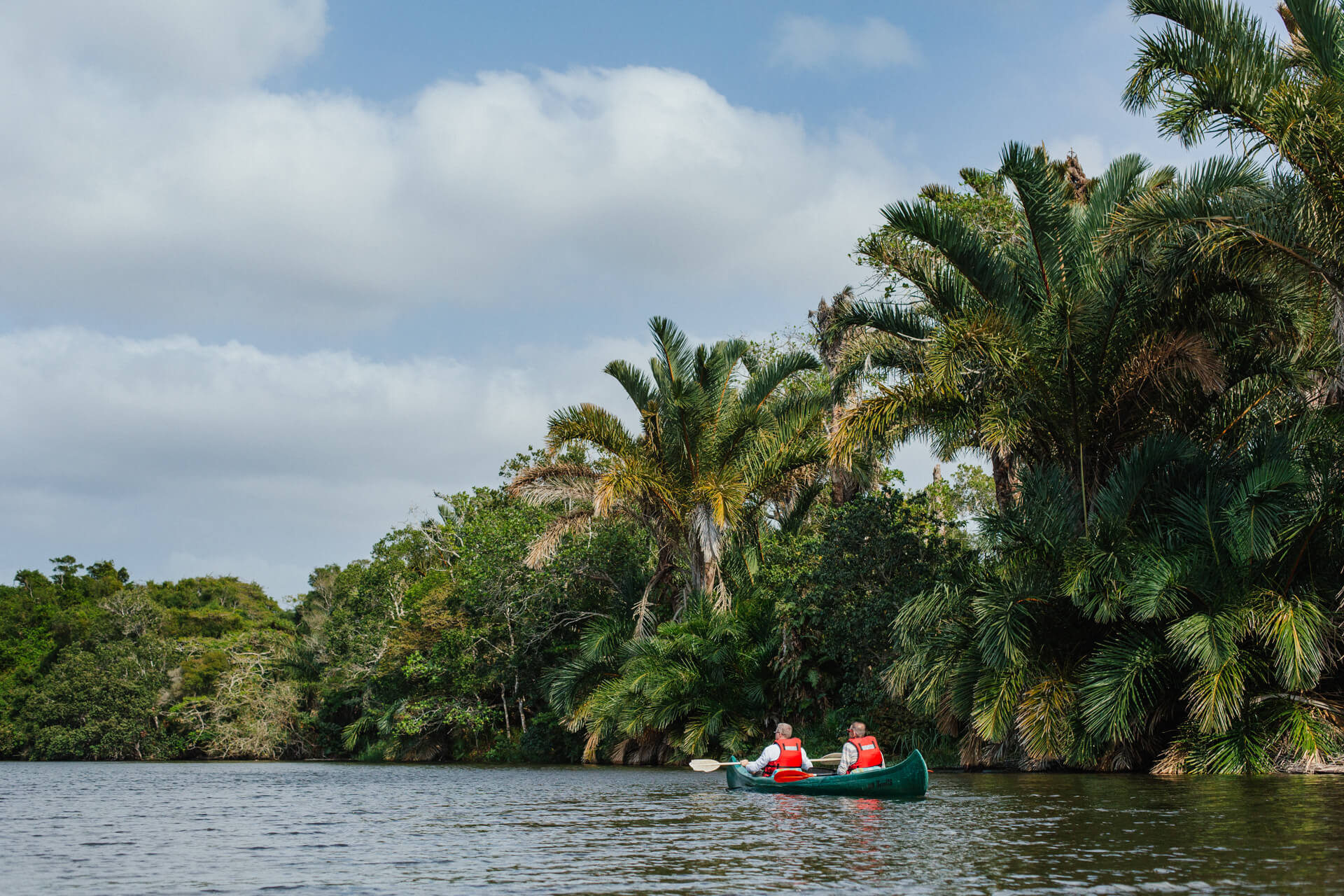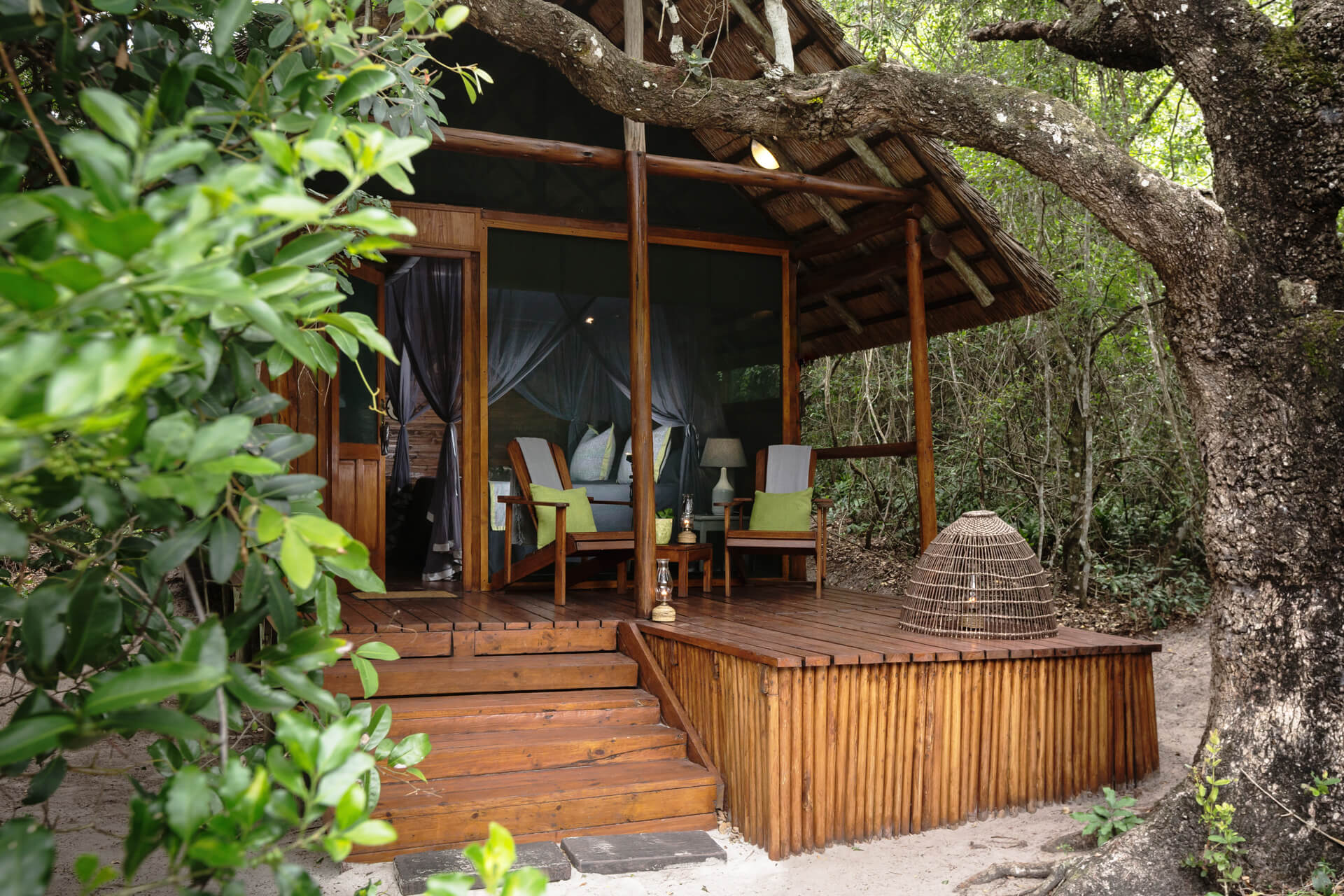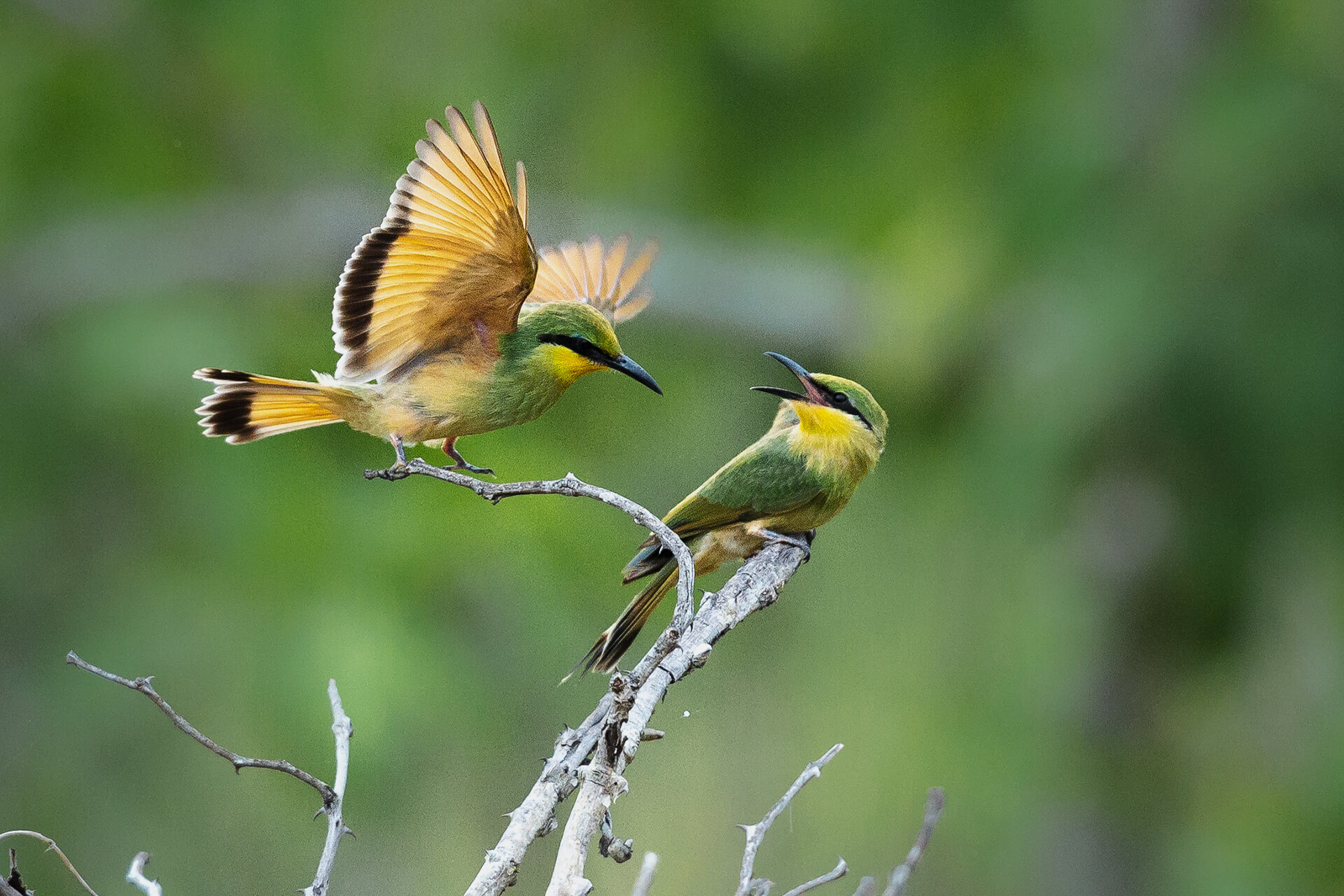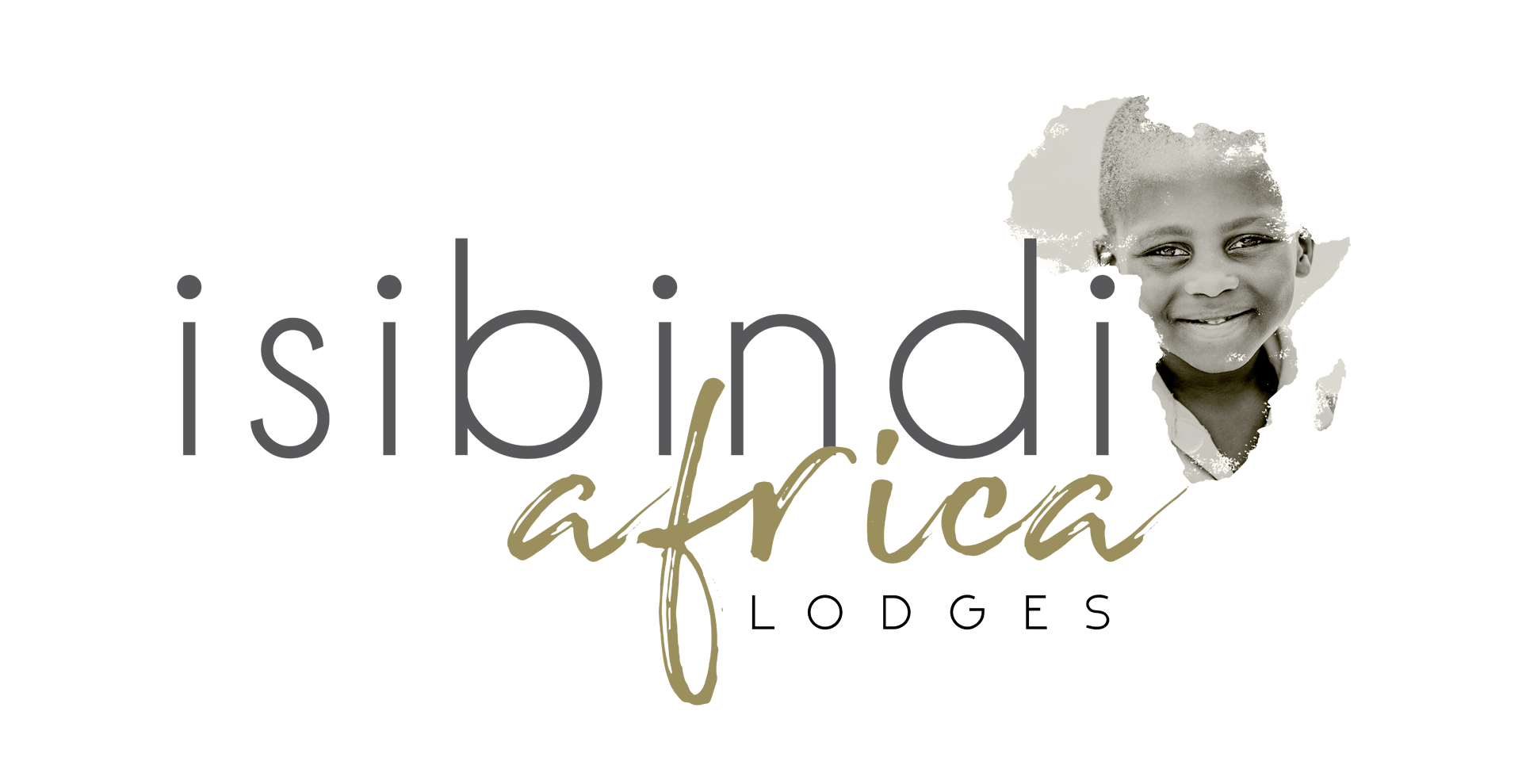iSimangaliso natural world
Posted on: April 30, 2018
There are so few unspoilt places left in the world and one feels it keenly when one enters such a protected natural part of the globe. One of my favourite such places is the iSimangaliso Wetland Park, one of South Africa’s first World Heritage Sites. Passionately protected by the iSimangaliso Authority, this vast expanse of natural land covers beach, lake, river and inland interconnected ecosystems.
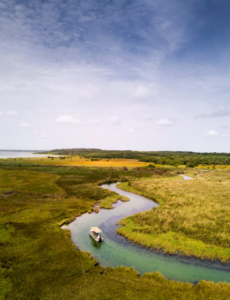
Drifting along the Kosi river and lakes system – photograph by Teagan Cunniffe
Isibindi Africa Lodges are privileged to have 2 lodges situated in pristine and very different settings within iSimangaliso: Thonga Beach Lodge and Kosi Forest Lodge.
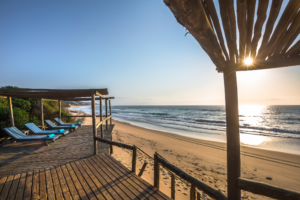
Thonga Beach Lodge is situated as close as it gets to miles of pristine beach – photograph by Chantelle Melzer
Here is some fascinating information about the reserve and its background, written by the iSimangaliso Authority, to inspire you to tread gently into this natural wonderland.
About iSimangaliso
The iSimangaliso Wetland Park was established in November 2000 when sixteen pieces of land covering 332 000 hectares were consolidated into a single protected area previously known as the Greater St Lucia Wetland Park, stretching from Kosi Bay in the north, bordering Mozambique, to Maphelane, south of St Lucia. In November 2007, the Park was renamed the iSimangaliso Wetland Park.
iSimangaliso means “land of miracles”. Ujeqe was King Shaka’s insila (secret keeper). When uShaka died, Ujeqe fled to avoid the insila’s customary burial with his master. He wandered into Thongaland, present-day uMkhunyakade District, and when he eventually returned, he said: “I saw wonders and miracles in the flat land and lakes of Thonga”. From that follows an isiZulu saying that if you have seen miracles, you have seen what uJeqe saw: Ubone isimanga esabonwa uJeqe kwelama Thonga.
From north to south, iSimangaliso stretches for 190 km. The Indian Ocean forms the Park’s eastern boundary. One third of KwaZulu-Natal’s coastline is in the Park. At St Lucia, the western boundary of the Park is only one kilometre from the coast. The Park is widest – 54 kilometres – where it bulges out to include Mkhuze Game Reserve.
In the early 1970s titanium (a valuable metal, sometimes called ‘black gold”) was discovered in the high dunes on the Eastern Shores of St Lucia. This attracted the interest of Richards Bay Minerals (RBM), a subsidiary of a multi-national mining company called Rio Tinto. RBM proposed to strip-mine the dunes on the Eastern Shores.
The Campaign for St Lucia led a broad coalition in the fight against the strip-mining of the Eastern Shores of St Lucia. Half a million citizens – including Nelson Mandela and Mangosuthu Buthelezi – signed a no-mining petition. The great poverty of the area influenced many local people to support the mining proposal, in the hope that the mine would bring jobs and prosperity. The Leon Commission was established to help the government of the day come to a decision about the future of the Eastern Shores. It found that though mining would cause great damage to the environment, it would provide only a few jobs, for a short time.
In 1995, the government of Nelson Mandela adopted the Leon Commission’s recommendation that no mining in the dunes of the Eastern Shores should be allowed. Instead, eco-tourism would be developed as a way of releasing the economic potential of this unique area without compromising its ecological integrity. iSimangaliso would become the anchor project of development in the area.
Though many of the people who live in the area are poor, iSimangaliso is one of the greatest environmental treasures in the world. In 1999, the beauty and biological wealth of iSimangaliso was recognised by its listing as the first World Heritage Site in South Africa. The original plants and animals of South Africa can still be found in iSimangaliso as they were in ancient times. Apart from many mammals and reptiles, 2505 types of plants, 1,258 species of fish and 521 bird species live in the Park, many of which cannot be found anywhere else in the world. No other place on earth has such a wide range of wetland types in a single protected area. It is the only place on earth where the oldest land animal (the rhinoceros) and the biggest land animal (the elephant) live alongside the oldest fish (the coelacanth) and the biggest sea animal (the whale).
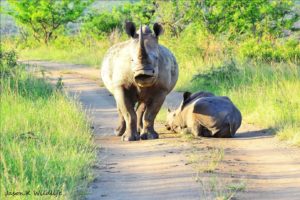
Rhino seen from Rhino Ridge Safari Lodge and photographed by ranger Jason Kipling
The iSimangaliso Authority was established in 2000 to manage the Park. It is governed by a Board appointed by the Minister of Environmental Affairs. A Chief Executive Officer and a small group of staff carry out the mandate of the Park under the guidance of the Board. The Authority contracts Ezemvelo KZN Wildlife to undertake day-to-day conservation in the Park.
The iSimangaliso Authority’s mission is to protect, conserve and present the iSimangaliso Wetland Park and its World Heritage and cultural values for current and future generations; to deliver benefits to communities, including land claimants, in and adjacent to the Park by facilitating tourism and related development; and to promote equitable access to the Park.
Everyone is welcome to visit and enjoy the Park. In the last ten years, free access to the Park has been given to groups of learners and their educators from many schools.
The goals of empowerment and transformation guide the iSimangaliso Authority’s conservation strategy. Communities – including land claimant groups – living inside and next door to iSimangaliso are the primary beneficiaries of the equity partnerships, income generation and job opportunities, training, capacity building and mentoring elements of each development. Skills development programmes – in tourism, hospitality and guiding – have enabled local people to take up jobs in the local tourism industry. The Authority also offers training in health and safety for contractors, SMME and entrepreneur development, craft production and food gardening. The construction and maintenance of fences, roads, field-ranger camps, picnic sites, park furniture, hides, public toilets and view points makes an important contribution to local livelihoods by providing opportunities for community based contractors to supply these services and create local jobs.
The Authority runs an art programme which has produced a group of commercially successful sculptors, and works with many schools on the School Awards and Environmental Education programmes. The iSimangaliso Higher Education Access programme has supported 87 young people in their tertiary studies. Annual incema harvesting from sites in iSimangaliso, co-managed by the iSimangaliso Authority and the leadership of local Land Claimant Trusts from Khula Village, Zwelisha and the Bhangazi Trust, enables local people to directly benefit from conservation.
The iSimangaliso Authority protects world heritage values through land care programmes. The Authority contracts community-based Small, Medium and Micro Enterprises to clear aliens (plants such as guava, chromolena, and lantana, which do not occur naturally in South Africa, kill other plants and use precious water) and rehabilitate land reclaimed from commercial forestry. More than half of the thousands of people who have worked on land care in iSimangaliso are women.
We have evidence from archaeology in the Park that people lived on the Eastern Shores for thousands of years. Small populations hunted, gathered food and later, grew crops where the soil allowed, using simple technology and traditional institutions to balance use and protection of their resources. We still have memories of their sacred spaces, from oral traditions and rituals that have been passed to us from the old ones, warm hand to warm hand like the special patterns crafters still use to weave sleeping mats and baskets.
Fifty years ago, the government of the day planted 15000 hectares of gum and pine trees on both the Eastern and the Western Shores – a great commercial forest – and forced the people who lived there to leave. Gum and pine trees grow very rapidly on the coast. They sucked the water out of the soil and dried up the wetlands. Under these trees grasslands stopped growing, and there was nothing for animals to eat. The Authority decided to remove all 15 million of those trees. Many people (employed from the surrounding communities) worked for years to cut them down, carry them to the trucks, and clear the alien plants that came up in great numbers in the spaces these trees left bare. The tree-stumps in the grass are all that remain of this vast commercial forest, and they will eventually break down and return their nutrients to the soil. The trees have only been gone a few years, but the wetlands are coming back, and the grasslands are recovering. Plants that have not been seen for thirty years are flowering again in these wetlands. Now there is enough grass and other forage to support many animals.
The iSimangaliso Authority has reintroduced twenty endemic game species that were hunted to local extinction, including elephant, buffalo, kudu, white rhino, cheetahs, wild dogs and lion. The reintroduction of game draws many tourists to the Park, which in turn increases the money available for community benefits. When all the land in the Park – from the Lebombo Mountains of uMkhuze to the Eastern shores – is linked through the completion of the fencing programme, eland, once native to the area, will be reintroduced. Park programmes monitor the health of introduced species and their impacts on the environment.
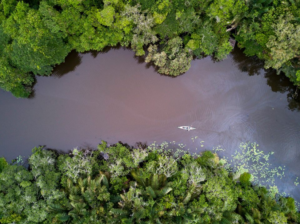
There is a hush that falls over one as one enters unspoilt natural land and water – image by Teagan Cunniffe
During the negotiations before the first democratic election in 1994, land restitution was seen as one of the most pressing issues the new government needed to address. Military conquest during the colonial period violently alienated land from native South Africans. When the Apartheid government took power, it forcibly removed millions of uncompensated men and women from their land and their investments in housing, education and community. In rural areas, many people were dumped in ethnic “homelands”. In urban areas, people lost their property and were forced to live in racially divided townships and locations far from the city centres.
After the elections, Land Claims Courts and Regional Land Claims Commissioners were established in every province of the country. Those who had been removed from their land were invited to lodge claims for restitution. The Land Claims Commissions then began the difficult process of researching the history of each land claim in order to restore the land to its former owners. The people of the iSimangaliso area responded by lodging fourteen land claims that covered the entire Park. The three largest claims – the Bhangazi claim on the Eastern Shores, and the Mbila and Mabaso land claims on Ozabeni – affected seventy five per cent of the land area of the Park.
The Bhangazi of the Eastern Shores of Lake St Lucia formally settled the first land claim in the Park in September 1999. Because of iSimangaliso’s conservation significance and its listing as a World Heritage site, and its great potential value for eco-tourism as a local wealth creating strategy, the terms of their settlement were that there would be no restoration of ownership of the land, but financial compensation would be granted, and the Bhangazi were assured of a stake in any future development of the area, including equity in tourism developments on their land in the Park and 8% of the commercial revenues raised on the Eastern Shores through gate fees and activities.
The Mbila (Emandleni) and Mabaso claims on Ozabeni were settled in 2002. In 2007, a further six claims were settled. By 2017, nine of the fourteen land claims on iSimangaliso had been settled.
Trustees from Land Claims Committees enter into a Co-management Agreement with the iSimangaliso Authority that defines the benefits of the claimants and provides the framework for the relationship between the land claimants and the conservation authority. These include rights of access to the Park without charge, access to significant burial sites, access to certain natural resources, employment opportunities, equity in development sites in the Park, and the payment of 8% of the commercial revenue generated on their land in the Park. A land claim Trustee serves on the Board that governs the Park.
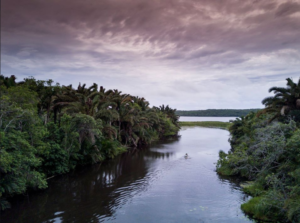
Kosi river and lakes system – photograph by Teagan Cunniffe


